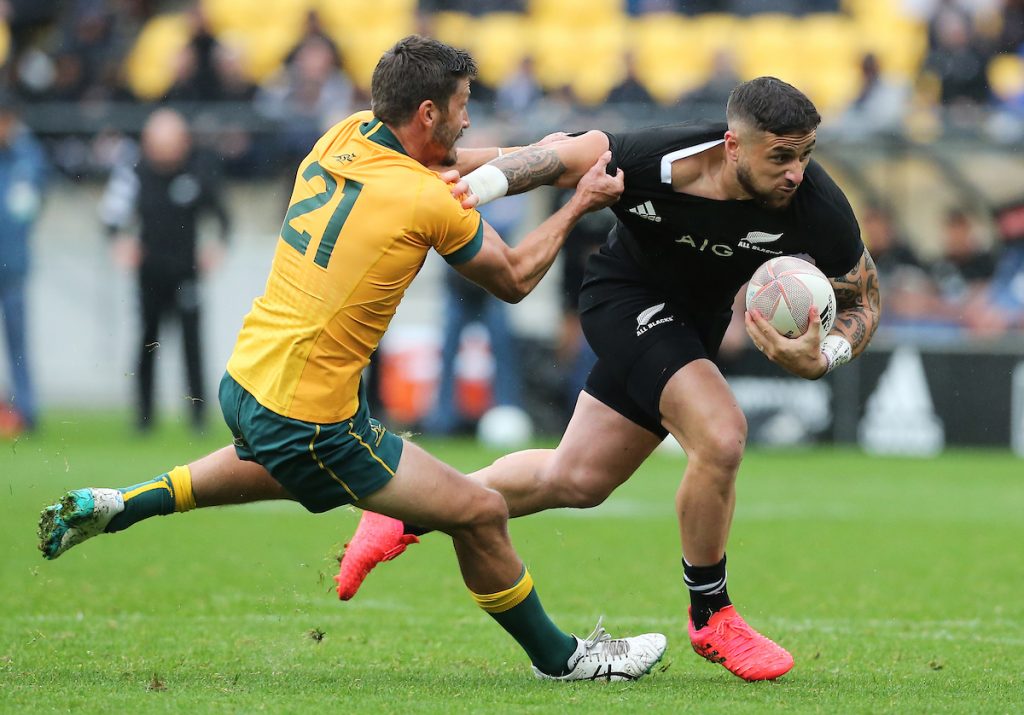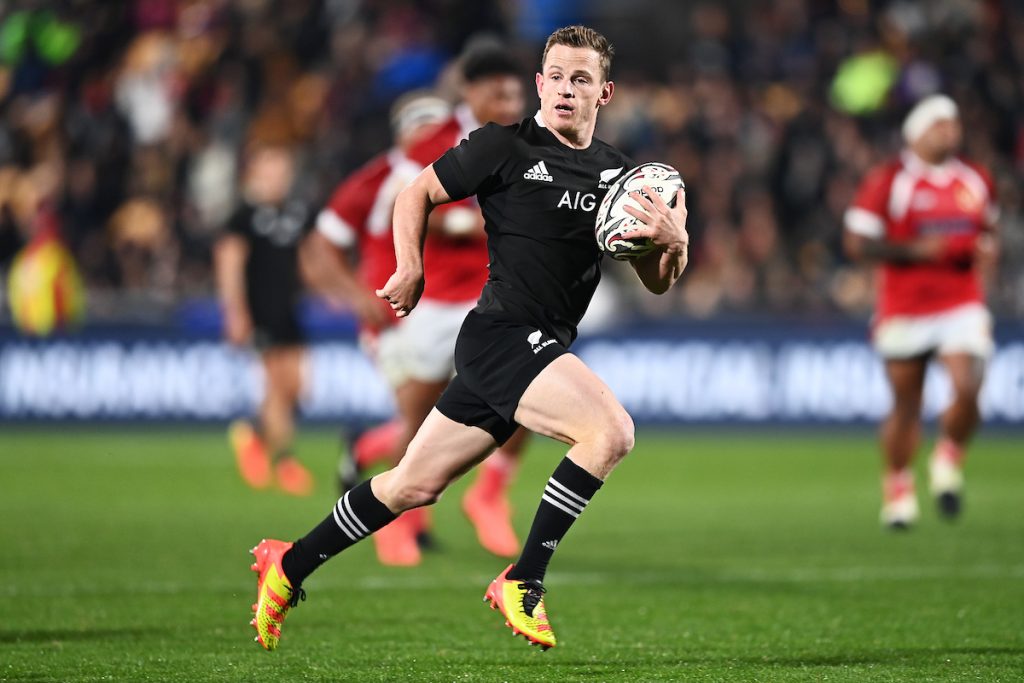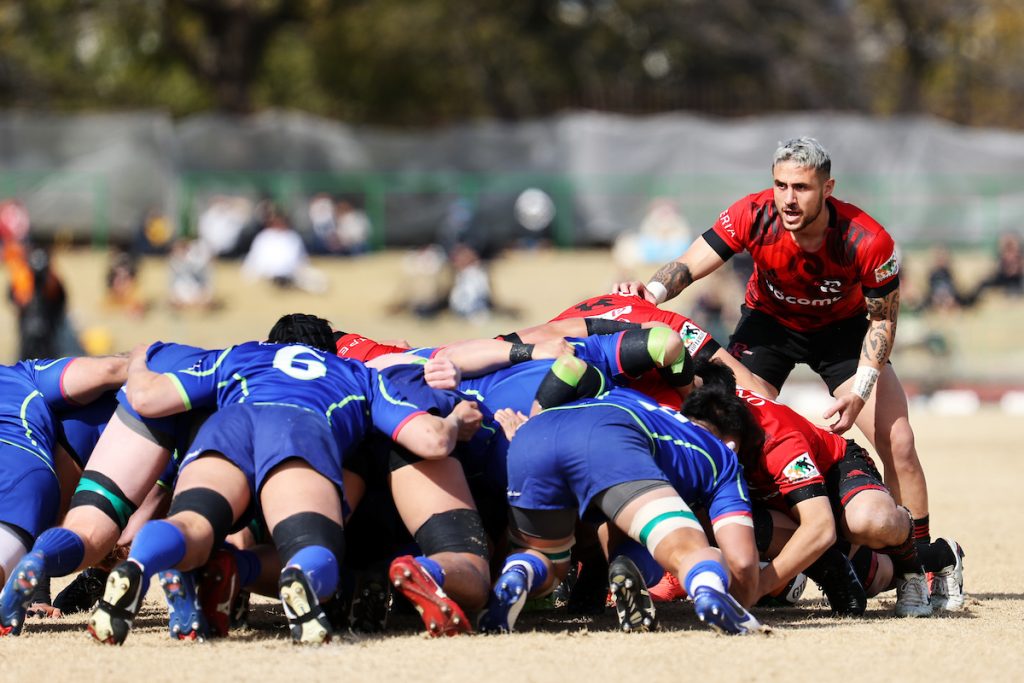The next three weeks could prove decisive for a handful of All Blacks who have struggled for on-field opportunities in recent seasons.
Absent from the current squad are three key players, Sam Whitelock, Aaron Smith and Richie Mo’unga, who are all expected to play major roles the New Zealand’s quest to reclaim the William Webb Ellis Cup in 2023.
The trio, who are awaiting the birth of children back home in New Zealand, should join the team in the coming months but, in the meantime, their understudies have the chance to stake their claims as the next best options.
That’s good news for the likes of Scott Barrett, Patrick Tuipulotu and even Tupou Vaa’i in the second row, while the supremely talented Beauden Barrett has been itching to get some extended minutes running the cutter from the No 10 jersey.
But it’s the absence of Smith that is perhaps the most significant.

While Faf de Klerk and, more recently, Antoine Dupont have showcased a wide range of skills for South Africa and France respectively in the past few years, Smith still stands as the greatest halfback in world rugby at present – and perhaps of all time.
He is the pilot flame that sparks the All Blacks furnace and supercharges the attack and while De Klerk and Dupont are individually brilliant, their nations haven’t built their attack around the skillsets of their starting scrumhalves.
Cobus Reinach has kept the Springboks humming since De Klerk’s injury in the second test of the British and Irish Lions series while France have called upon a number of young No 9s over the past 12 months, who have all largely flourished in the test arena.
In the nine years since Smith first burst onto the scene against Ireland at Eden Park, however, the All Blacks have always struggled without the lightning-quick ball typically dished up on a platter by the test centurion.
Perenara is an excellent player – perhaps the most well-rounded scrumhalf in the world. He’s as combative as a loose forward, strong over the ball and capable of stepping in at first five-eighth if needed.
For the vast majority of that period, TJ Perenara has been the back-up to Smith, accruing 71 matches for the All Blacks since his debut in 2014.
Tellingly, however, just 17 of those appearances have been in the No 9 jersey.
Perhaps even more revealing is that of those 17 starts in black, just six have come against traditional tier-one rivals such as Australia, South Africa and France. The remaining 11 have come against the likes of Argentina, Italy and a handful of emerging nations.
And in those six starts, the All Blacks have tasted victory just 66 per cent of the time – compared with the team’s 81 per cent success rate against similar opposition when Smith has worn No 9.
Perenara is an excellent player – perhaps the most well-rounded scrumhalf in the world. He’s as combative as a loose forward, strong over the ball and capable of stepping in at first five-eighth if needed.
But, importantly, he is not a like-for-like substitute for Smith, and as a side can’t afford to completely switch their gameplan around to account for individual changes in the line-up, the All Blacks’ game suffers for it.
Perenara, unlike his fellow All Blacks halfbacks, is also left-footed, which requires a slight adjustment from the side during exit plays.

Brad Weber, meanwhile, debuted in 2015 and wasn’t sighted againt until 2019, but has now established himself as the third cab off the ranks. He has managed just nine test appearances since his return to the squad, however, and just one start – earlier this year against Fiji.
Weber is perhaps a more comparable player to Smith than Perenara is, which bodes well for the All Blacks game plan – but he still hasn’t got the delivery speed or fine execution that makes Smith the best in the world at what he does.
Finlay Christie has now emerged as the fourth-choice No 9, earning a handful of minutes off the bench against Tonga and Fiji throughout July.
All three understudies have travelled to Perth with the All Blacks, and all three will have opportunities to showcase their talents in the coming weeks, according to All Blacks assistant coach John Plumtree.
“If you look at the calibre players that are stepping into the players that we have left behind, they’re not bad,” Plumtree said in the build-up to the third and final Bledisloe Cup test.
“It’s a good opportunity for TJ, Brad Weber, obviously Finlay Christie as well … In that department, there is a couple of guys that will be looking to take those opportunities.”
They’re all really good players in their own right. Slightly different, maybe, to Aaron but they’ll bring their best to the party, I’m sure.
All Blacks assistant coach John Plumtree on the team’s halfback stocks
Unsurprisingly, however, it’s the two more experienced scrumhalves that will be given the first chances to impress.
“I haven’t got any stats around how many test matches TJ Perenara’s played but I’m sure there’s quite a few,” Plumtree said. “We’ve got a very experienced halfback there, [a] leader, and he’ll be looking to establish a position really.
“While Aaron’s away, it’s an opportunity for both those boys to really step up and own that position and both of them will get an opportunity to do that.
“We’re not sure if Aaron’s going to be able to join us. Those three halfbacks know that so they’re going to work real hard to get the number one spot. It’s a good opportunity for them.
“They’re all really good players in their own right. Slightly different, maybe, to Aaron but they’ll bring their best to the party, I’m sure.”

The first-choice trio of Smith, Perenara and Weber have all signed with New Zealand Rugby until the end of 2023, which means the three halfbacks that travelled to Japan for the 2019 World Cup could back up their efforts four years later in France.
There is, however, heat coming from outside the current core contingent.
Even ignoring the rapid rise of Christie, there’s Smith’s back-up at the Highlanders, Folau Fakatava, to consider.
Fakatava was New Zealand’s provincial player of the year in 2020, helping Hawke’s Bay earn promotion into the Premiership division of the now re-titled NPC. That excellent form continued for the Highlanders in the formative stages of this year’s Super Rugby competition before the 21-year-old tore his ACL in April, ruling him out for the remainder of the season.
Eligibility issues – Fakatava was born in Tonga – could prevent the dynamic scrumhalf from making his test debut for New Zealand until 2023, but that won’t necessarily rule him out of contention for the World Cup later that year.
Just twice has Perenara had the opportunity to play back-to-back games for the All Blacks in the No 9 jersey while Weber has never had that luxury.
All Blacks selectors have shown in the past that they’re willing to gamble on some fresh faces in World Cup seasons and while halfback is perhaps a more crucial position in the backline than wing, Aaron Smith went from test debutant to first-choice starting halfback for the All Blacks in the space of just a few matches back in 2012.
As such, there are no guarantees that any of the current back-ups are secure in their current roles, especially when they’re yet to prove they can keep the All Blacks machine running smoothly in the absence of Smith.
That could change over the next few weeks, however, with some regular time in the saddle.
Just twice has Perenara had the opportunity to play back-to-back games for the All Blacks in the No 9 jersey while Weber has never had that luxury.
Perhaps, with some consistent minutes, one of that pair will be able to find some greater cohesion in their performances and build some genuine chemistry with their teammates.

While some may suggest that Weber is perhaps more deserving of the first opportunity to run out in a starting role, given Perenara’s Japanese sojourn earlier this season, the All Blacks may plump to partner Perenara with Barrett, given the strong combination the two forged at the Hurricanes from 2012 to 2019.
Plumtree’s comments seem to suggest that Perenara’s stint in the Top League hasn’t harmed his current position in the team.
“TJ’s been a big part of this team for a long period of time,” he said.
“The fact that he went to Japan and then came in a little bit late, that’s [the] reality but at the end of the day, he’s slipped back in seamlessly like he’s never left. I know he missed the Steinlager series [in July] but you wouldn’t think that if you saw him running around the park.”
This upcoming period without Aaron Smith on deck won’t be the final chance for TJ Perenara and Brad Weber to press their cases, but it may well be the last opportunity they have for regular minutes before 2023, when they will likely all bid farewell to New Zealand rugby.
The duo both hold great standing in the team, based on comments from their coaches and teammates alike, which means it would take some excellent performances from other halfbacks to oust the current first-choice triumvirate.
That task becomes even more difficult if Perenara and Weber can prove once and for all that what they offer on the field can live up to their standing off of it.



Comments
Join free and tell us what you really think!
Sign up for free